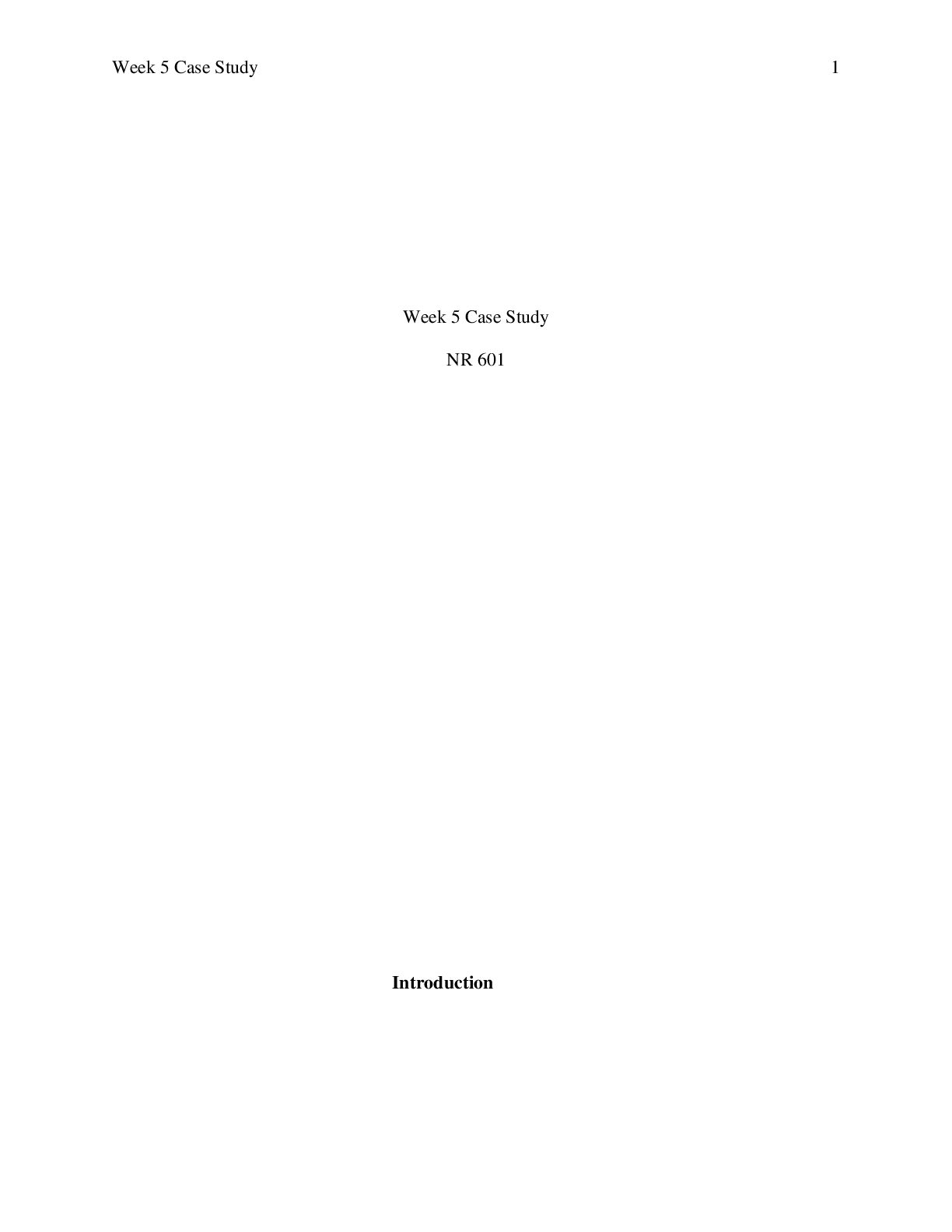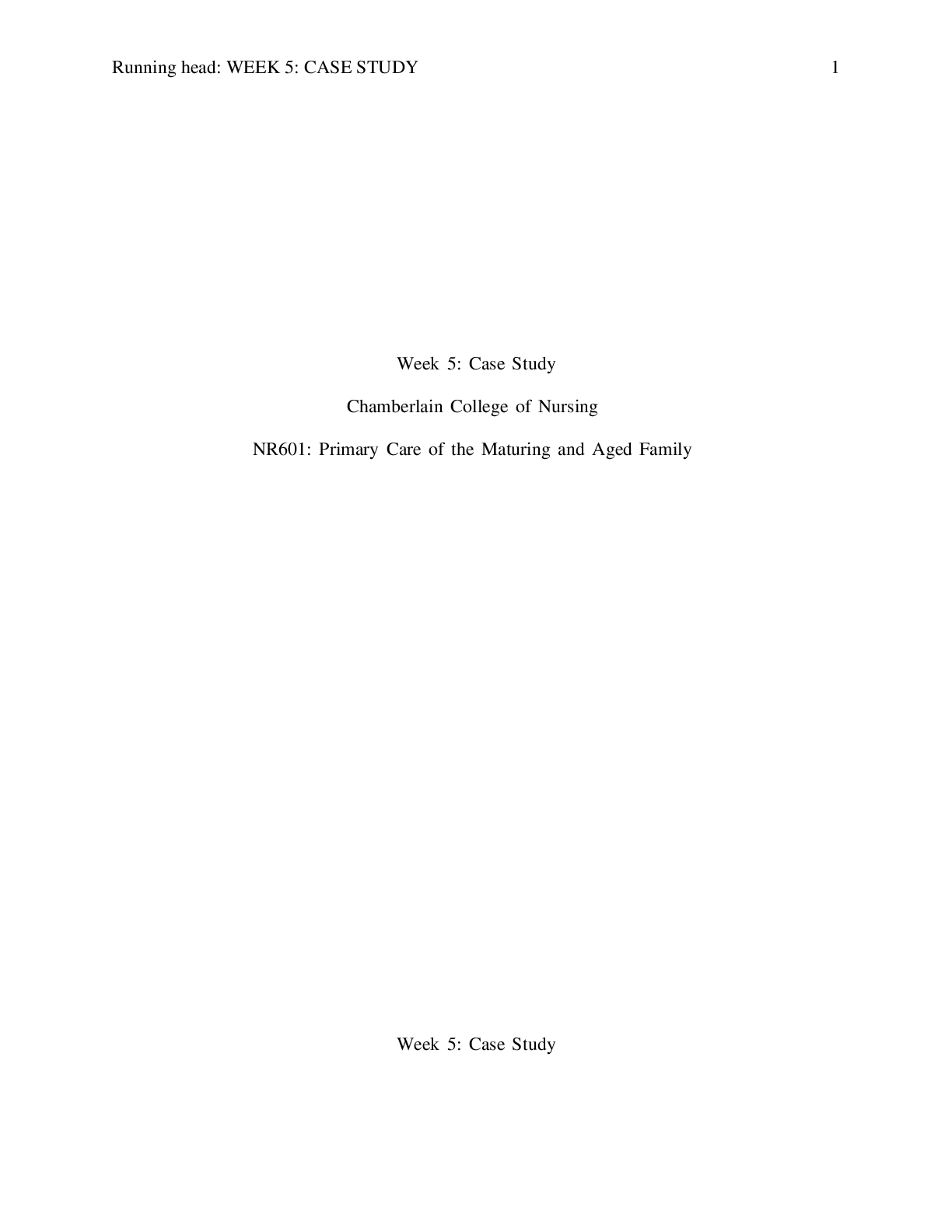Pharmacology > CASE STUDY > Pharm_ Week 5 Case study 21 year old male seen in the ED for the following symptoms; he is, hot, flu (All)
Pharm_ Week 5 Case study 21 year old male seen in the ED for the following symptoms; he is, hot, flush, complaining of thirst, states he has been "peeing" a lot. He is lethargic...
Document Content and Description Below
Week 5 Case study 21 year old male seen in the ED for the following symptoms; he is, hot, flush, complaining of thirst, states he has been "peeing" a lot. He is lethargic, though arousable, has a f... ruity breath odor and his friends who brought him in say that he has been binging all weekend on beer and tequila at various parties. He is thin, almost cachexic in appearance. Vital Signs: BP 90/40, HR 120, RR 35. Urine is very pale, water like. The patient arouses enough to tell you that he has been a insulin dependent diabetic since age 10 and he had left his insulin at home in another city where he lives with his parents. His usual daily dose is NPH 15 u with 5 units of regular every morning, and 10 units of NPH at bedtime. His serum blood glucose is 500 mg/dL; a glycated hemogloblin is 10. Other labs are: serum creatinine 2.0; BUN 25; Serum potassium of 4.0 1. What is the most likely diagnosis? Describe what will happen to the potassium once insulin is administered to him? This is a critical time when this shift starts to occur, what is the biggest problem that become an emergency? 2. Review current guidelines for insulin therapy in Type 1 diabetics. Does his current insulin replacement reflect those recommendations? Explain how you would adjust it. The current guidelines for Conventional insulin therapy recommend a combination of Regular Insulin and NPH (usually a 30/70 mixture), generally giving 2/3 in the AM and 1/3 in the evening. (Lehne, p 715, 717) His current regimen does not include Regular insulin in the evening. 3. Explain two of the psychological components that may be present in this person that causes the behavior that triggered his current problem. 4. Which of labs indicate that he has problems in other organs most likely related to his diabetes? 5. He has been stabilized and has been sent to the ICU. One of his orders is for sliding scale insulin using regular insulin. This is a scale that indicates amount of insulin given based on a fingerstick blood glucose. The order reads: for blood glucose < 150 give no insulin give 2 units for glucose 151 - 200 give 4 units for glucose 201 - 250 give 6 units for glucose 251 - 300 give 8 units for anything >301. What is wrong with this order? How many units of regular insulin will you give for a blood glucose of 202? Why do you rotate injection sites for insulin [Show More]
Last updated: 1 year ago
Preview 1 out of 5 pages
Instant download
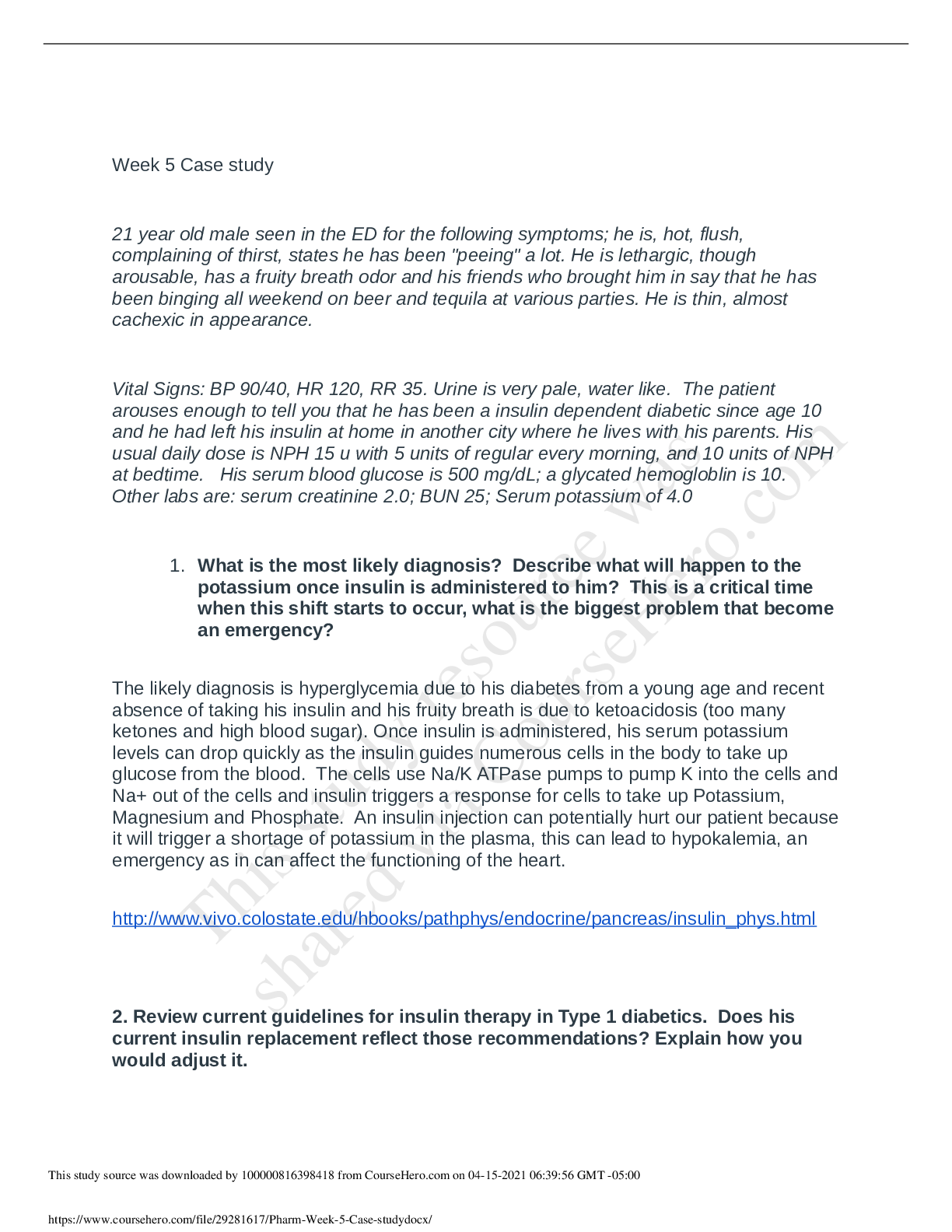
Buy this document to get the full access instantly
Instant Download Access after purchase
Add to cartInstant download
Reviews( 0 )
Document information
Connected school, study & course
About the document
Uploaded On
Apr 15, 2021
Number of pages
5
Written in
Additional information
This document has been written for:
Uploaded
Apr 15, 2021
Downloads
0
Views
70



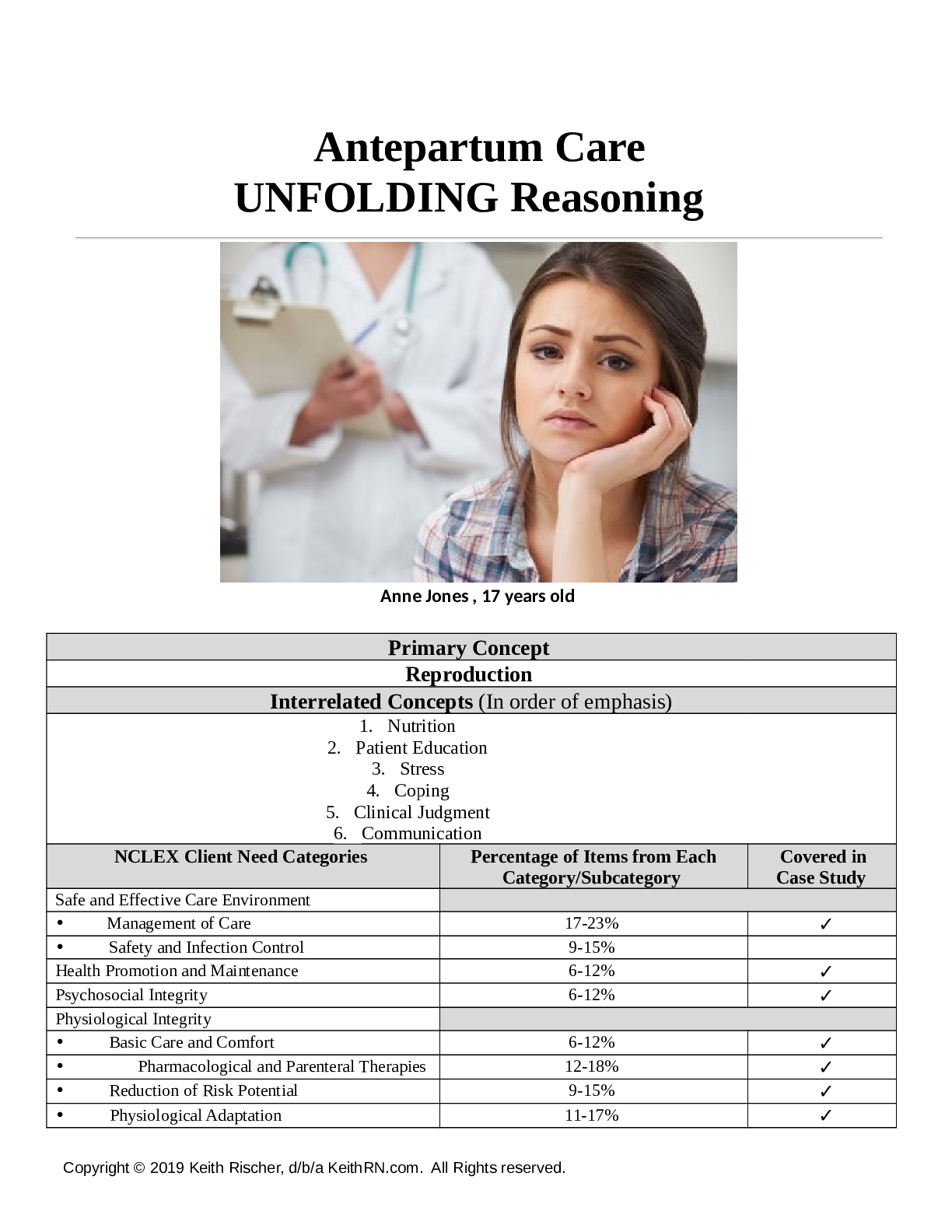
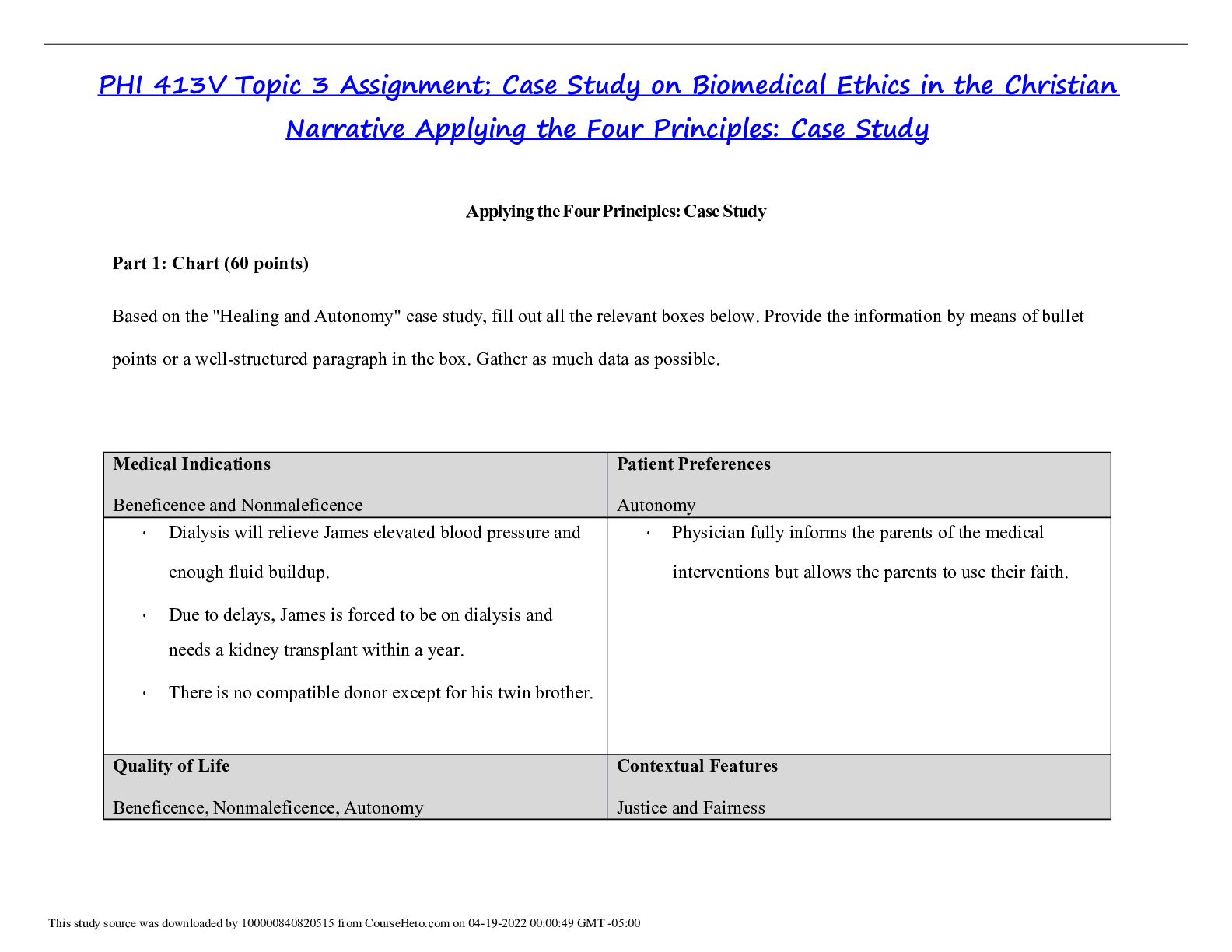
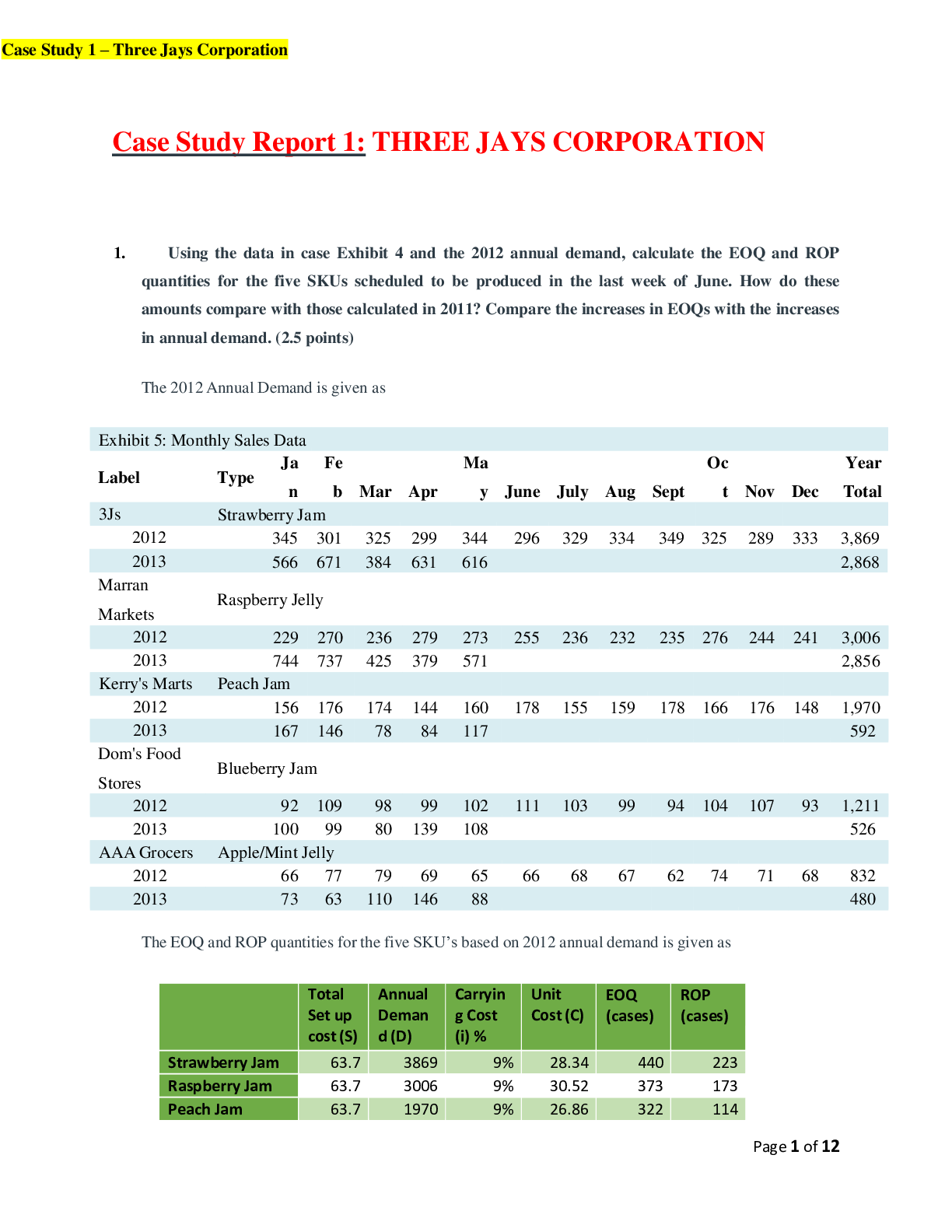
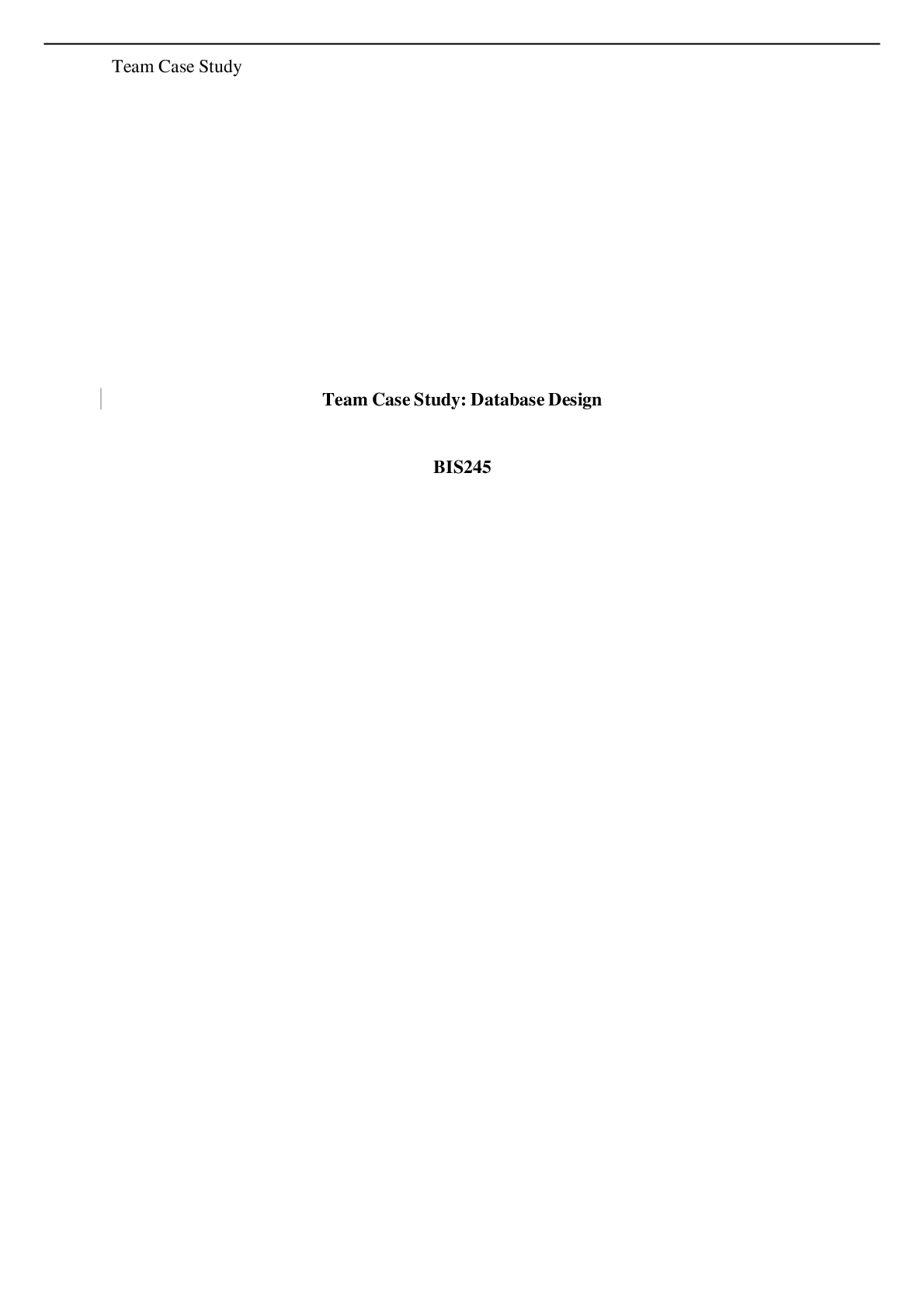


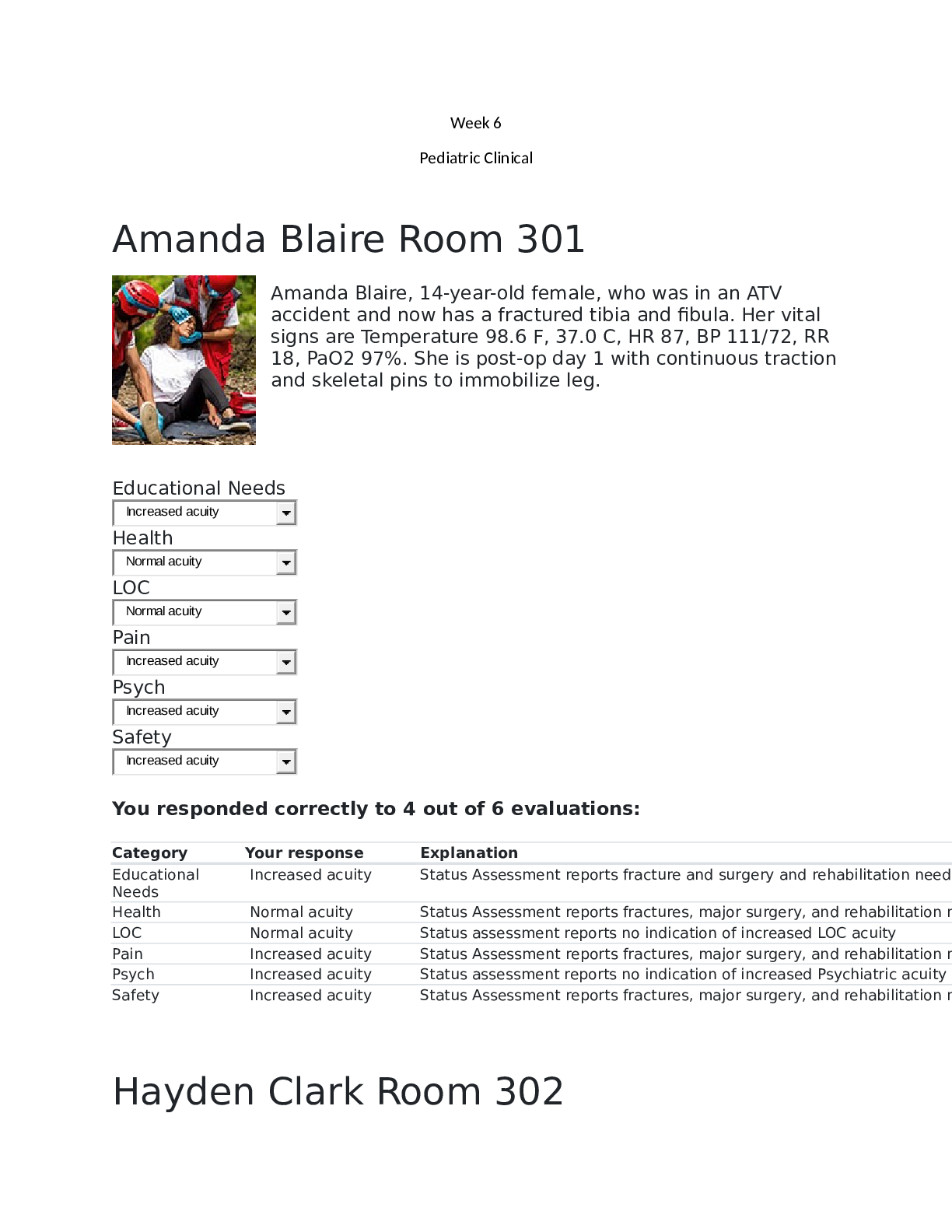
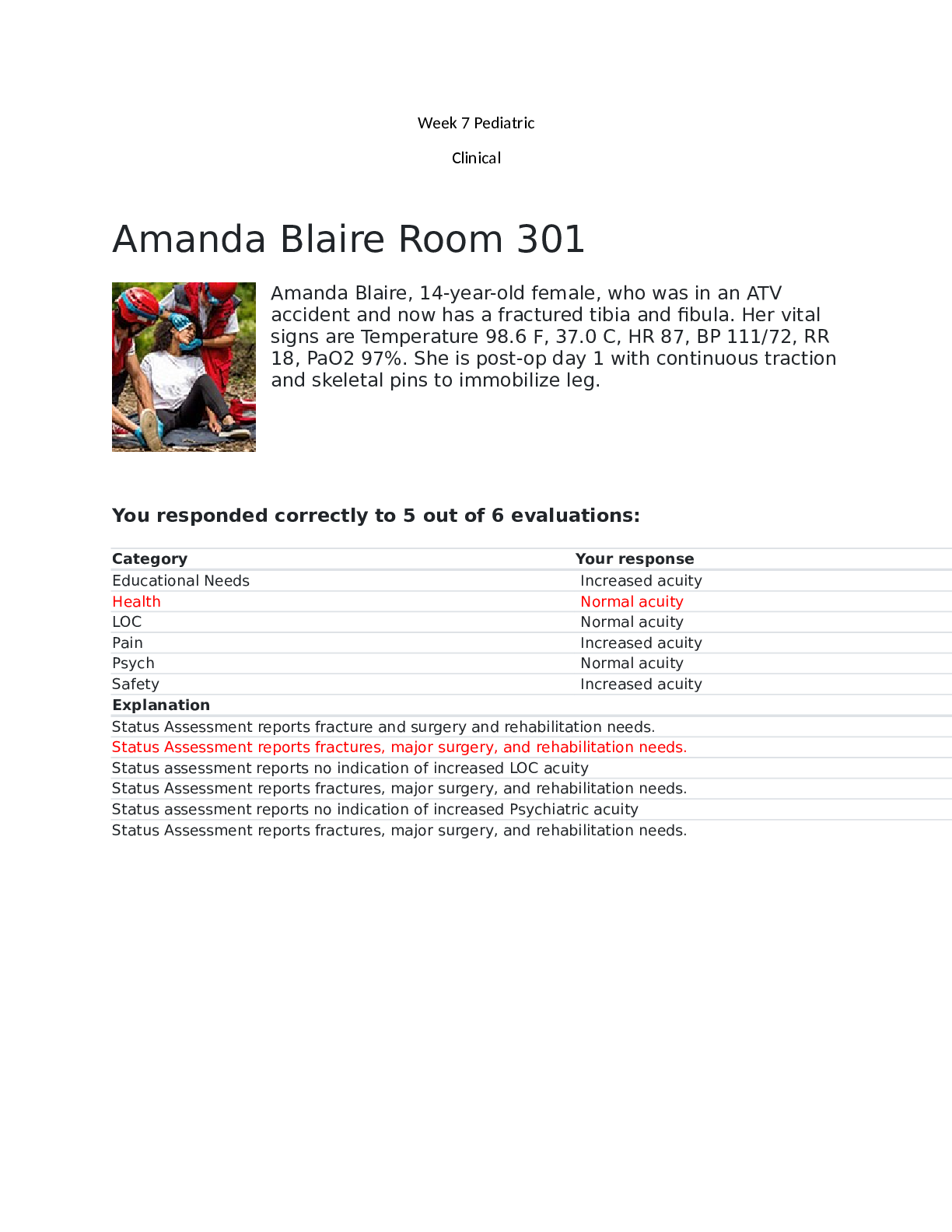
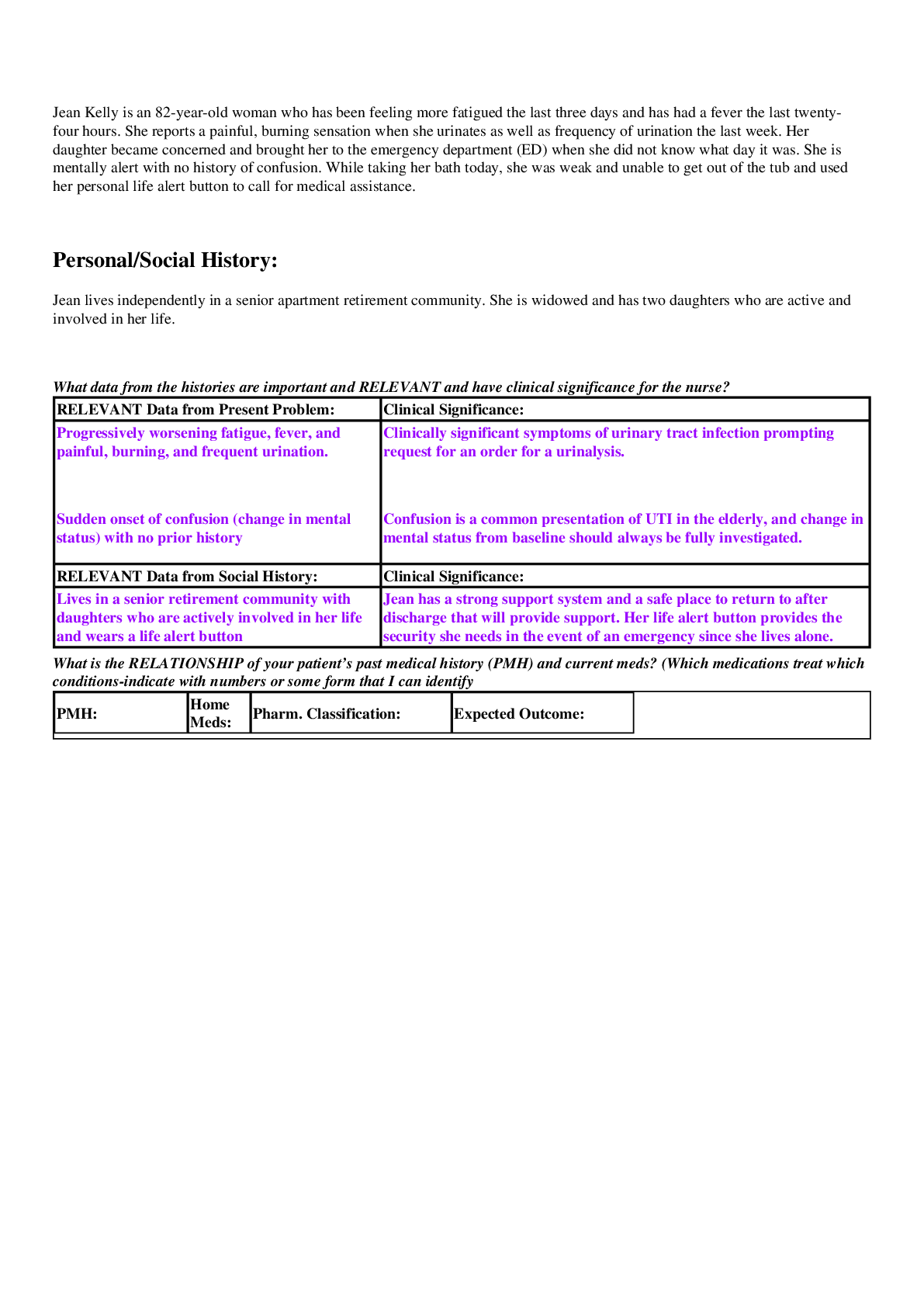

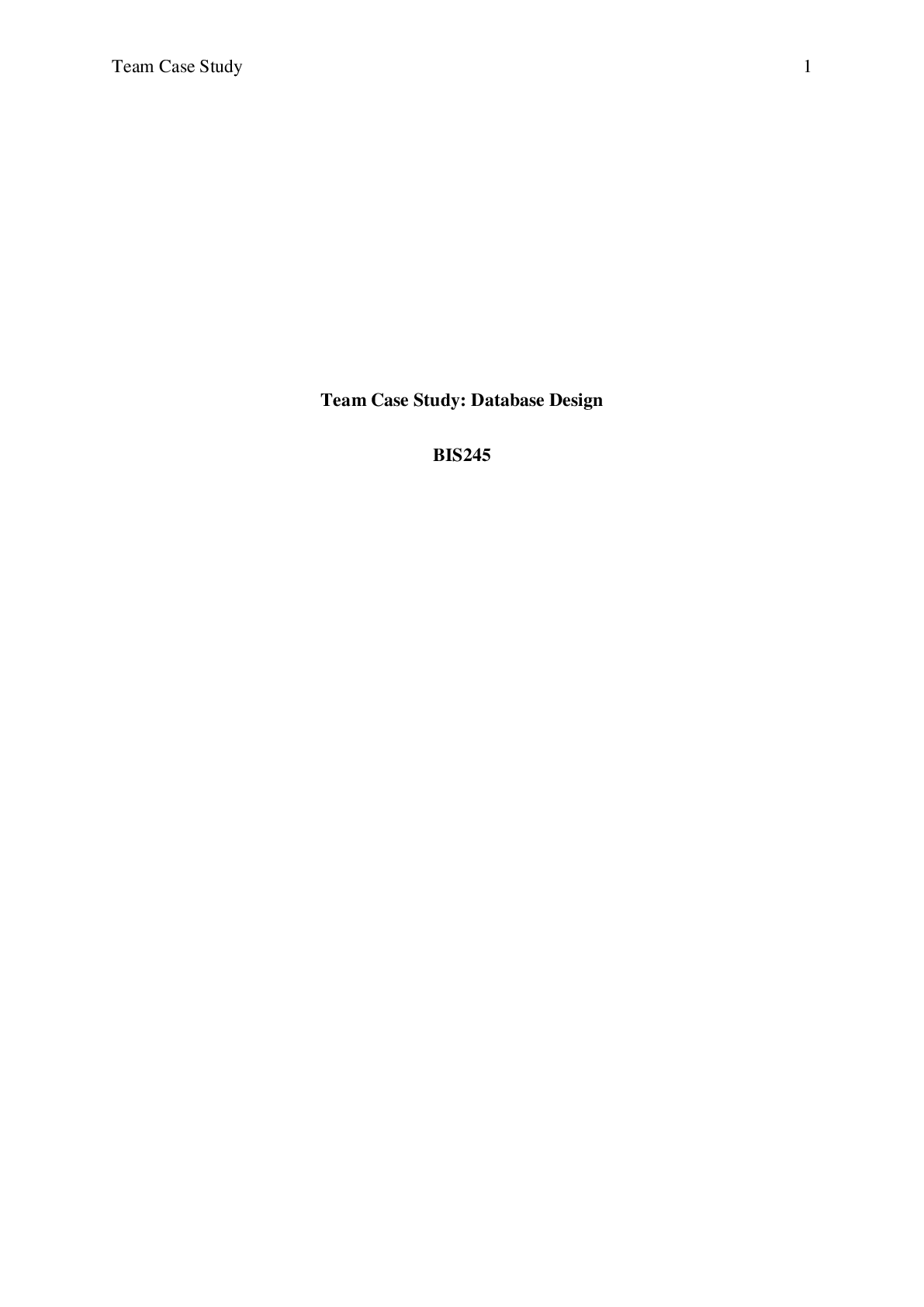
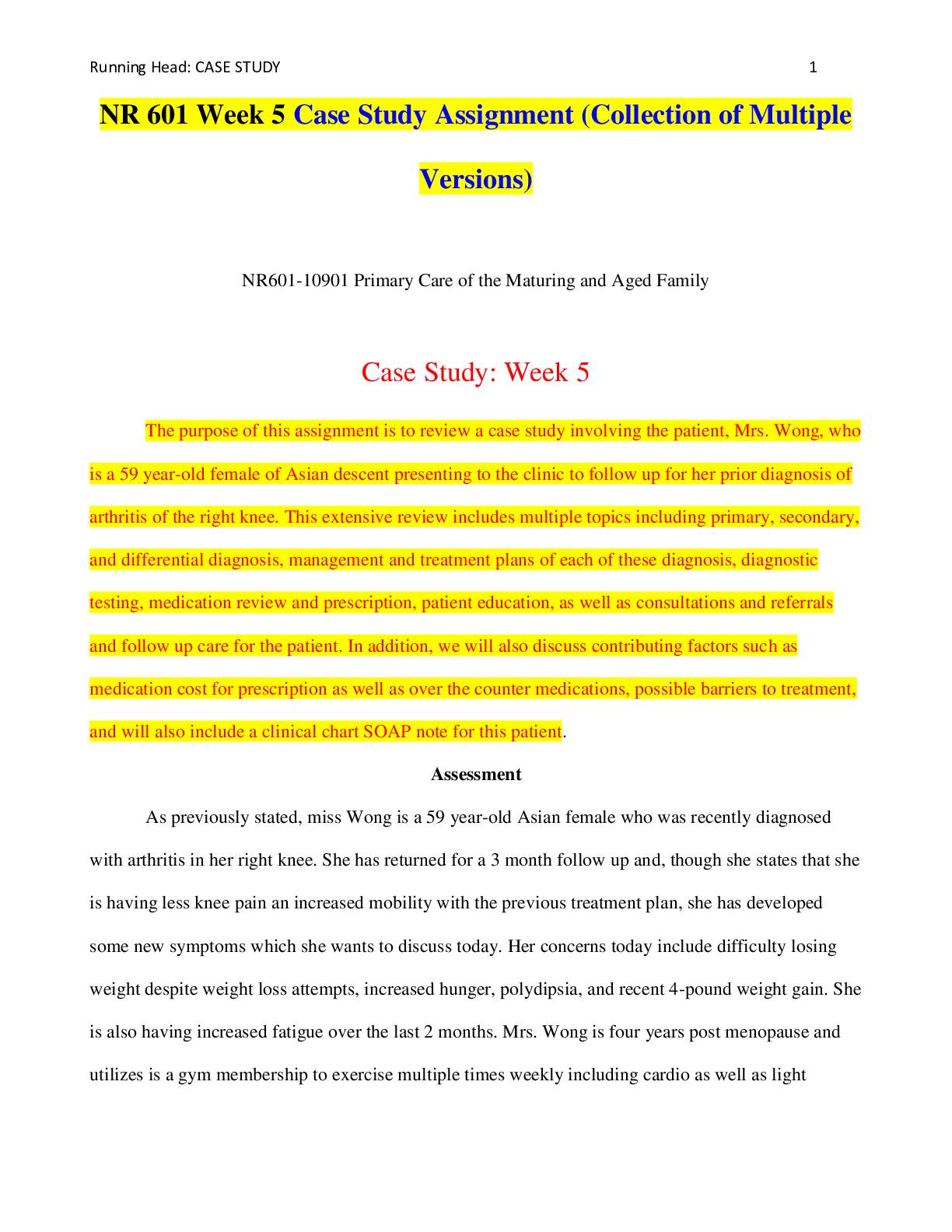
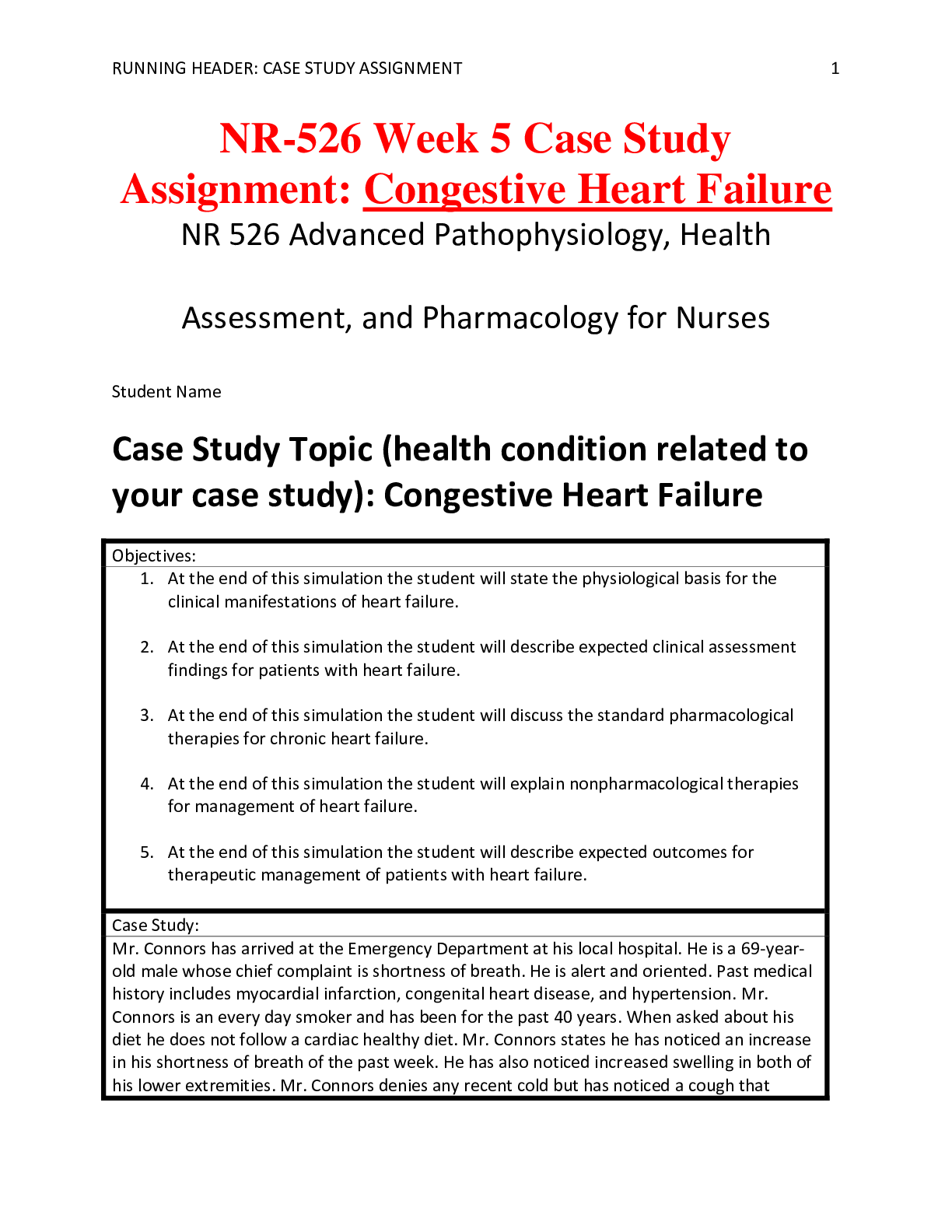



.png)


